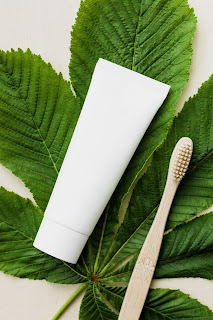Fluoride is a naturally found inorganic component of the tooth structure,more precisely tooth enamel.
The tooth enamel consists of 96% inorganic and 4% organic components in it.
It is an important part of enamel, the outermost covering of the teeth.The various layers of tooth from inside to outside are pulp,dentine,enamel in the crown portion and pulp ,dentin and cementum in the root portion.
Fluoride is the strengthening core component of the enamel of or tooth. Lack of which might lead to wearing out of the most important layer of the tooth and ultimately cavities. Many countries all over the world have made an effort of adding it to the public water supplies so that everyone will automatically get the bare minimum amount required for keeping their teeth healthy.
Fluoride intake works by the action of remineralization of the enamel covering. When the teeth erode due to reasons physical chemical or genetic either one of them, what happens is the enamel is losing some of its components and thus this process is called demineralization. Whereas fluoride helps in rebuilding the structural component of the enamel thus remineralization.
When the tooth basic structure remains strong, the tendency to develop caries or what is called cavities is reduced as the outermost surface has now been toughened and strengthened. Also the tooth loses its its minerals gradually over a period of time,fluoride intake replenishes them also helps slowing down this process of loss of minerals.
HOW DOES FLUORIDE HELP IN REDUCING CAVITIES ?
When the remains of our food is struck in between or over the surface of the teeth, bacteria present in the mouth they act on them and during that process,they release acid .
Acid which harmful to the tooth surface and will eventually corrode it. Bacterias acting on that particular region will call out all the other bacteria in a mechanism they follow of their own resulting in production of large amounts of acids which will eventually lead to loss of minerals from the enamel surface of the tooth.This weakened tooth surface is now more prone to future caries or cavities .
Fluoride is a mineral that naturally replenishes the lost minerals and helps the tooth remain strong by the process of remineralization.
SOURCES OF FLUORIDE
1.EXTERNAL
Toothbrushes ,toothpastes ,mouthwashes etc and a lot of other dental products and materials and pre- infilterated with fluoride to help its attachment on the external surface of the enamel /tooth surface.
2.INTERNAL
Practices such as fluoridated water in many countries in the local supplies have been helpful in the long term as it gets ingested and goes up into the blood strem and then reaches the tooth enamel from the insides of our body system.
SIDE EFFECTS OF FLUORIDE
Fluorides can be a tooth savior for life but it can also have side effects when its consumed in excess,especially in children. The condition is known a dental fluorosis.
This results in painless white spots on the surface of the enamel and effects the overall appearance of the dentition.
A lot of people might even think what amount of fluoride is present in their water and how much should be there. All of this information can be accessed by asking your local authoriry inchargr of this community water supply. One must be aware of his/her environmental supplies and how and to what extent are they getting affected from it.
TAKE AWAY POINTS:
1.Flourides play a major role in maintaining and strengthening the structure of the outermost layer of the tooth i.e., enamel.
2.Fluorides prevent tooth decay and cavity formation either by external or internal source.
3.Excessive fluoride intake may lead to dental fluorosis.
4.One should be aware of the amount of fluoride present in their water supply.
5.A regular dental visit is necessary to avaoid any lack of such minerals and prevention of caries from forming.




Very good post about fluoride for teeth. Highly informative and nicely written. Keep up the good work.
ReplyDelete